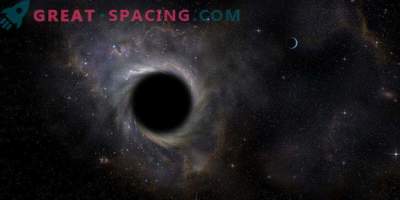
An artistic interpretation of a supermassive black hole in the galactic center. Blue color - the radiation material, close to the hole. Gray - the torus, represented by gas and dust
Observations of gravitational waves reduce the possible explanations for the formation of black holes beyond the Milky Way. They can rotate slower than ours or they do it swiftly, but they fall in a rotation oriented to their orbit.
Within our galaxy, we can observe black holes in the EM survey as they revolve around stars. New information provide gravitational waves. Physicists believe that the first signals in 2015 were created in the last split second of connecting black holes into a single massive one. At that time, these collisions were predicted, but never observed. So gravitational holes are the best and only way to study the population of double black holes outside the Milky Way. Scientists have two new scenarios. The first is that the rotation of the holes occurs in slow motion. If so, then the stars pass through another process that is not in our galaxy.
Or the rotation is rapid, like in our country, but they fall, therefore they are not aligned with the orbit. So there are in a more dense environment - star clusters. The most likely option is that there are both possibilities. More accurate information will be obtained in the coming years with the help of LIGO.











































